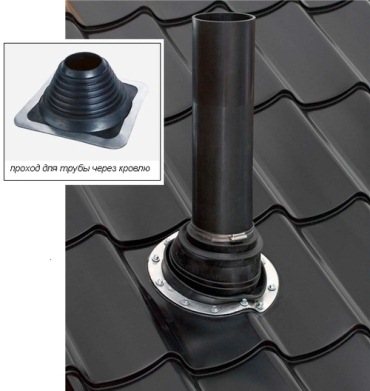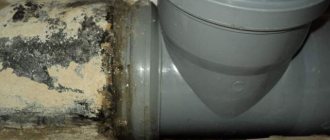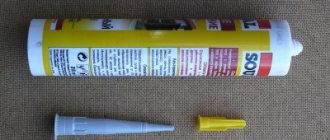Features of heat-resistant sealants
A sealant is a special compound that can create a strong insulating layer on the surface to be treated or between parts. Thermal sealant is the most reliable means, and the requirements for it are very serious. The material is made on the basis of heat-resistant silicone - a polymer that is a transparent elastic mass. Also, other substances are introduced into the composition that enhance the operational properties of the sealant (minerals, metal powder, and others). There are also high temperature epoxy adhesives - two-component products that are mixed before application.

Applications of sealants
The materials are widely used in everyday life and industry. Sealants are involved in the installation of heating pipes, pipelines for supplying cold and hot water, because they can withstand not only heating, but also temperature extremes up to subzero temperatures. Heat-resistant sealants are suitable for stoves, chimneys in baths, saunas, private houses. A special automotive compound is useful in strengthening and sealing gaskets, engine seams, headlights, a car muffler, and an exhaust pipe.
With the help of sealants, you can repair heating household appliances - a kettle, hob, oven and even a moonshine still. Typically, a food thermosealant is used for this purpose, which is harmless in contact with food, taking into account heating. The same type of material is used in the repair of equipment in food production, factories, and catering establishments.
Other areas of use of sealants:
- protection of stainless steel products, alloys from moisture penetration;
- prevention of damage to complex equipment operating in air, aggressive conditions;
- restoration of electrical engineering, radio electronics for filling elements and electrical insulation;
- protection of auto parts from corrosion;
- sealing welded seams of gas boilers;
- repair of fireplaces, ventilation, fire structures.


The main properties of sealants
Silicone sealant is a heat-resistant material, the ability to withstand high temperatures is its hallmark. Conventional heat-resistant sealants are used up to +350 degrees, but there are compositions that can withstand +1500 degrees, therefore they are considered refractory. The materials are non-flammable, non-flammable, non-explosive.
Other properties of sealants:
- the ability to withstand high loads without loss of sealing properties;
- plasticity and elasticity (due to this, the seam does not crack after drying);
- good adhesion to any materials (provided the surface is dry at the time of application);
- moisture resistance;
- long working life and long storage period;
- non-toxic, safety for humans, the environment and animals.
Almost any sealant is oil-resistant or oil-resistant - it does not deteriorate from contact with petroleum products. Also, most products are immune to the action of weak acids, alkalis, other chemicals and household chemicals.


The negative properties of sealants include the fact that they do not adhere well to wet surfaces, the level of adhesion drops dramatically. Also, before use, you should treat the base from small debris, otherwise the seam will not serve for a long time. Some products do not harden quickly, and it will take several days before use. The sealant cannot be painted, the paint does not stick to it, although there are colored products on sale (red, black, etc.).Too large gaps are not recommended to be sealed with a thermo-sealant, since the material may not harden in depth.
Additional features of sealants
Thermal sealants also have a number of related properties, which are sometimes no less in demand. So, most of them are resistant to UV radiation, therefore they are suitable for outdoor work, for example, for gluing a defect in a chimney, roofing passages. The sealants are frost-resistant, which makes them indispensable for the repair of baths, stoves and fireplaces in country houses, which are not heated all year round. After application, the compositions do not crack during vibration, so they are used for the restoration of machinery and equipment.
Silicone compounds
Once applied and cured, high-temperature silicone forms a hard but flexible layer of material that vaguely resembles rubber. The color of the composition is most often red, this is due to the presence of iron oxide in it. The maximum temperature threshold is on average 250 ºС, some manufacturers declare it at the level of 280-300 ºС.
You will say what exactly such a red substance did you put on the engine parts of a car during repairs, and what does the stove have to do with it? In fact, high-temperature silicone sealant for internal combustion engines and furnaces differ from each other in chemical composition. Acid is present in the red substance we are used to, with the help of which the engine parts are sealed. In the open air, it begins to evaporate, giving off a pungent vinegar smell.
Advice. In order not to confuse a car sealant with an oven sealant, it is not at all necessary to smell it. It is enough to remember that heat-resistant polymer for engines is sold in tubes, and not in tubes for a construction gun. Better yet, carefully read the label on the packaging.


Silicone sealants intended for work with ovens are neutral and practically odorless; due to their elasticity, they are resistant to temperature extremes and environmental conditions. The maximum layer thickness depends on the manufacturer and is indicated in the instructions on the package. However, due to the low temperature threshold by thermal engineering standards, the scope of application of heat-resistant sealants is limited to the following types of work:
- sealing cracks in brick chimneys in an area located on the street;
- sealing the junction of the roofing materials to the chimney to prevent water infiltration;
- installation or sealing of chimneys made of any materials, including a sandwich, working in conjunction with highly efficient boilers (efficiency over 90%). The gas temperature in this case does not exceed 150 ºС, this is the normal mode for silicone compounds;
- any work related to filling the cracks (not through!) outside the brick ovens.


Main types of high temperature sealants
There are different types of sealants on the market that have the ability to withstand high temperatures. For repairing defects in the oven masonry, it is better to buy those that contain silicates and silicone. The products are packaged in small cylindrical cartridges, which can be conveniently inserted into the assembly (glue) gun.


Also on sale you can find small packages in tubes that resemble a paste, which are used like any ordinary glue. Various colors allow you to choose the composition to match the color of the base material to make the patch aesthetically pleasing or even visually invisible. All sealants are divided into heat-resistant, heat-resistant, sealing and facing properties.
Heat resistant sealants
The basis of such funds is silicone, they can withstand up to +350 degrees. To achieve such resistance to heating, iron oxide is also introduced into the composition, therefore, the main color of the mass becomes orange.Some products contain acetic acid, they are absolutely not suitable for iron - creating an oxide film, sealants will not provide sufficient adhesion. But for aluminum, other non-ferrous metals and stainless steel, they can be used, although for any metal it is better to purchase an acid-free composition.
Typically, heat-resistant sealants are used to apply to the outer walls of fireplaces and stoves. They are also suitable for open areas where the seam will be affected by atmospheric factors, ultraviolet light - for example, for roofing from corrugated board, tiles. You can use compounds to eliminate gaps in the chimney or car parts. The thermal resistance limit is always indicated on the packaging. It must be remembered that +350 degrees is the upper limit of a short-term temperature rise. Constant heating should not exceed + 250 ... + 270 degrees.


Polymerization of the sealant occurs in a few hours, some heat-resistant agents harden only after 1-2 days. The closer the expiration date, the faster this process takes place. The ideal conditions for the polymerization of the sealant are considered to be + 23 ... + 25 degrees, humidity 50%. Other conditions will slow down or speed up the complete curing of the material.
Heat resistant sealants
Such products contain silicates, therefore they are designed for more serious heating - up to +1500 degrees, and even direct exposure to flame is possible. Heat-resistant sealants should be repaired between the bricks, cast-iron elements of the furnace masonry, the seams of the combustion chamber, defects in heating boilers. Sealants do not lose their properties even with extreme heating, but when exposed to open fire, you need to find in the instructions a direct indication from the manufacturer of this possibility.
Heat-resistant sealants are usually black, gray due to the presence of silicates. They adhere perfectly to any materials, and yet it is recommended to sand the surface before applying. The work should be carried out at a temperature close to +20 degrees. After drying, the seam will be tough, since such sealants are not highly elastic. It is better not to use them on products subject to vibration, but they are great for structures that have already undergone shrinkage.


Silicone seals
You can also find a red or blue semi-liquid silicone paste on sale. As it hardens, it forms an elastic seam that can stretch up to 2 times. Such sealants are used for new masonry, which are subject to strong shrinkage. It is also possible to use seals to cover sandwich chimneys from the outside. Means cannot withstand high heating - they work only within the range of -40 ... + 250 degrees. The maximum seam depth should not be more than 6 mm, application is carried out at + 5 ... + 30 degrees. The most popular brands of silicone seals are Titanium, Moment-Herment, Penosil.
Adhesive facing compounds
Materials with adhesive properties are used if the oven masonry is covered with a network of cracks, because it is unrealistic to process the entire area with an ordinary sealant. Facing compounds perfectly penetrate the narrowest and deepest cracks, reliably hiding them. After repairing the fireplace, the stove will acquire a more aesthetic appearance. Typically, such mixtures are sold in buckets ready-made or in bags in the form of a dry powder. The heat resistance of the facing compounds can be different:
- mixtures based on kaolin dust, chamotte - up to +400 degrees;
- one-component adhesives with mineral additives - up to +800 degrees;
- mastics for gluing tiles, stone - up to +1000 degrees.


What are the types of refractory sealants?
Despite the fact that a special heat-resistant brick is used for the oven masonry, it can deteriorate over time.Cracks lead to the fact that air begins to flow into the combustion chamber - it depressurizes, smoke and fumes enter the room, the efficiency of the furnace deteriorates.
To avoid this, you can use special sealing compounds. They are of different types and are used depending on the place and nature of the damage to the masonry:
- Heat-resistant silicone pastes - withstand temperatures up to + 250-350 ° C;
- Heat-resistant silicate pastes - applicable at temperatures up to + 1500 ° C.
Both varieties are polymer compositions in the form of pastes. They have different additives in the formulations that provide certain properties of the sealant. Such materials are commercially available in tubes with convenient nozzles for application.


Using a special oven sealant
Important: in no case should liquid heat insulators, fire-resistant paints and car sealants be used to repair ovens. Their temperature threshold and burning holding time are extremely small, so there will be no sense from such a "putty".
Working with sealant
For the convenience and speed of applying the product, it is worth immediately preparing the necessary tools. This is an assembly gun (if the sealant is implemented in the form of a cylindrical balloon), a gas burner, a rubber spatula, a stationery knife, paper tape, gloves. A gas burner is only required when using heat-resistant sealants.
Metal application process
To begin with, any surface should be carefully prepared. It is treated with sandpaper, another abrasive material to remove rust, polyurethane foam and improve the quality of adhesion. Next, the base must be rinsed and degreased with alcohol, dried completely. All adjacent areas are covered with masking tape.
Before work, you must put on gloves and load the pistol. The upper part of the tube is cut off, then a cap is put on it. The cartridge is inserted into the gun and the sealant application begins. The procedure is as follows:
- squeeze out the product to the place of the defect;
- the thickness of the seam cannot be made larger than indicated in the instructions;
- the applied mass must completely cover the crack;
- immediately after squeezing out, smooth the sealant with a spatula, you can also remove the excess composition before hardening (it will be problematic to do this as it cures);
- heat-resistant agents dry under normal conditions, heat-resistant ones are dried in stages, with heating;
- you should wait until the full hardness of the composition is reached, after which you can start operating the part.
Working with thermo-sealant for stoves and fireplaces
The sealing of the gaps between the bricks is carried out especially carefully in order to achieve high quality and maintain an aesthetic appearance. The surface of the brick can be covered with masking tape so as not to stain, leaving only cracks or seams open. The nose of the tube is cut so that the hole is beveled, and its diameter becomes less than the width of the seams. After installing the tube in the pistol, you can start working:
- clean the surface of dirt, sandpaper, which will help enhance adhesion;
- degrease the base, dry it with a construction hair dryer;
- glue masking tape;
- fill the gaps with sealant, leave to dry for a day;
- burn the heat-resistant sealant with the flame of a gas burner, after which it will acquire its properties.
The oven must not be ignited at full power immediately after completion of the work. It is heated gradually so that the sealant does not crack.


Top manufacturers
It is better to buy products from trusted manufacturers - their quality is usually higher. The low price should be alarming - heat-resistant products cannot be too cheap. Otherwise, organic substances may be added to them to reduce the amount of silicone. The strength of such a material will be much lower, as well as the elasticity.
The following brands have proven themselves well:
- Moment Herment High Temperature. Withstands up to +315 degrees, can be used for car repairs, heating systems, perfectly fills grooves and cracks, is suitable for metal, wood, stone, glass, plastic.
- ABRO. Sealants of this company are sold in a large assortment, of different colors, with different technical characteristics. Within seconds, the products create gaskets with the highest strength.
- Penosil. The Estonian brand produces a material for filling seams, cracks, which can withstand up to +1500 degrees of heating.
- Macroflex. Refractory sealants of this brand are used for joining parts and repairing defects on products with low mobility, since the connection will be rigid. Withstand temperatures of + 1200 ... + 1500 degrees.


Soudal, Krass, Titan sealants are also famous for their excellent quality. All these tools can eliminate the need for expensive repairs or rearrangement of stoves and fireplaces. With strict adherence to the instructions, you can get a reliable connection by doing all the work yourself.















